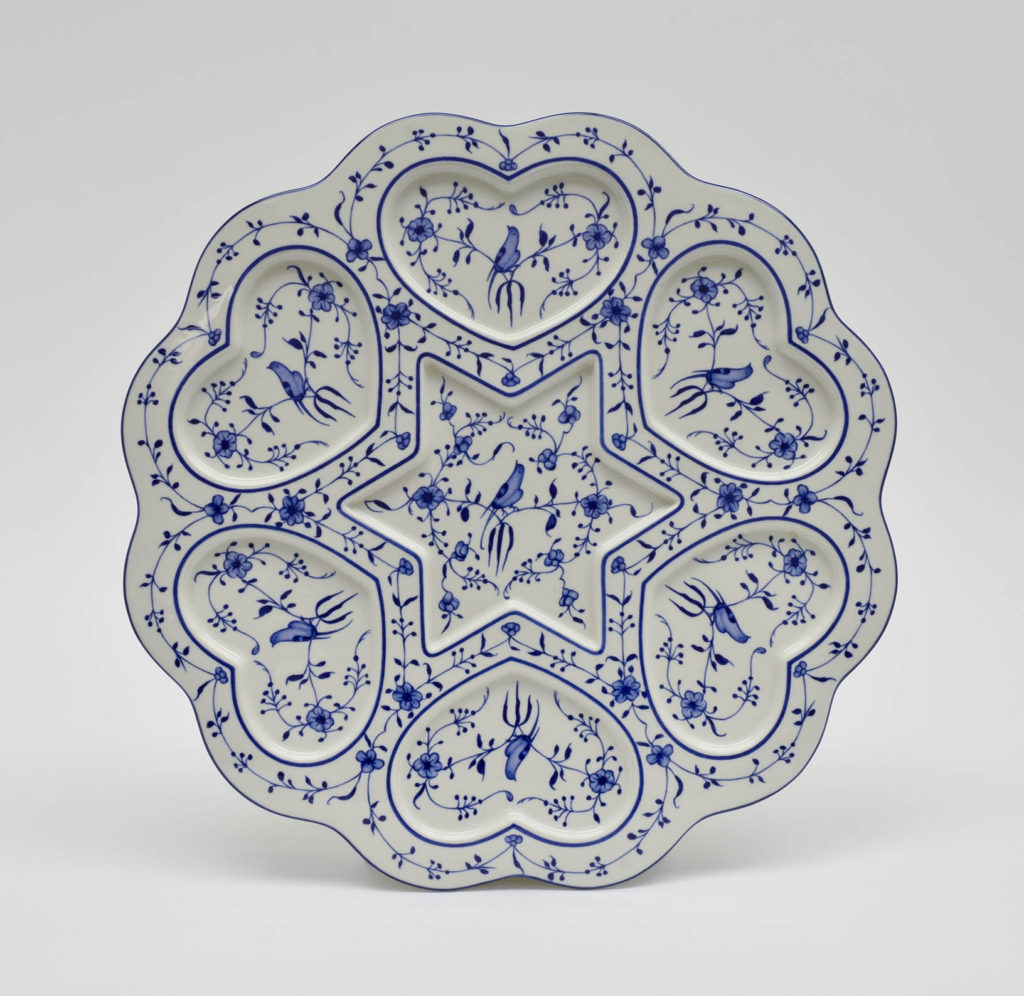Seder Plate
Villeroy & Boch, limited edition of 500
Luxembourg, 1983
Porcelain, d. 14 in.
Cincinnati Skirball Museum, gift of Jerome S. and Suzanne Teller, 2017.2
The festival of Passover recalls the Exodus of the Israelites from Egypt and proclaims the message of freedom for all humanity. The holiday begins with the seder, which means order, in which text and foods combine to tell the story of the experience of liberation from slavery. The seder plate holds the symbolic foods that are used during the ceremonial feast.
This plate is a replica of a seder plate designed in 1900 in Vienna for a Prague family. It was shown that year in the world-famous exhibition of Judaica in Czechoslovakia. The object was later looted by the Nazis for a museum conceived by Adolf Hitler to show the lost culture of the Jews. Many years later, in 1983, the plate was on view in the exhibition The Precious Legacy: Judaic Treasures from the Czechoslovak State Collections, which appeared at the Smithsonian Institution in 1983. The original plate was chosen to be reproduced in a limited edition of 500 by Villery & Boch to commemorate The Precious Legacy exhibition. The plate has a delicate pattern of blue and white flowers and birds, with six heart-shaped recesses surrounding a Star of David.

